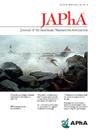Reprint of: Self-identified prescriber tendencies in sodium-glucose cotransporter-2 inhibitor outpatient prescribing
IF 2.5
4区 医学
Q3 PHARMACOLOGY & PHARMACY
Journal of the American Pharmacists Association
Pub Date : 2024-07-01
DOI:10.1016/j.japh.2024.102177
引用次数: 0
Abstract
Background
Despite expanded indications and demonstrated cardiovascular and renal benefits, prescribing rates of sodium-glucose cotransporter-2 (SGLT-2) inhibitors are low.
Objectives
The study aimed to identify factors impacting prescriber decision-making when prescribing SGLT-2 inhibitors in the outpatient setting and identify differences across specialties in self-identified prescribing patterns.
Methods
An anonymous survey was administered electronically to prescribers in relevant specialties at a large community health system. Descriptive statistics were used to compile results, and subgroup comparisons were conducted utilizing Fisher’s exact test.
Results
Fifty-one prescribers completed the survey, representing a 25.2% response rate. The highest reported prescribing rates were for type 2 diabetes (92%), and the lowest for HFpEF (20%) and atherosclerotic cardiovascular disease risk reduction (16%). Prescribers without clinic-embedded pharmacist were more likely to report cost and insurance had at least a moderate effect on prescribing compared to prescribers with clinic-embedded pharmacists (95.3% vs. 62.5%, P = 0.0228) and less likely to report hemoglobin A1c less than 6.5% to have at least a moderate effect on prescribing (20.9% vs. 62.5%, P = 0.0317). Compared to specialty providers, primary care prescribers were more likely to report hemoglobin A1c over 9% had at least a moderate effect on prescribing (92.0% vs. 42.9%, P = 0.0082) and less likely to note history of urinary tract infection (22.2% vs. 85.7%, P = 0.0028), history of mycotic infection (38.9% vs. 100%, P = 0.0036), and sex (male: 5.6% vs. 42.9%, P = 0.0242; female: 8.0% vs. 42.9%, P = 0.0447) had at least a moderate effect on prescribing.
Conclusion
Prescribing hesitancies vary across specialty and when clinic-embedded pharmacists are present. Pharmacists may help improve SGLT-2 inhibitor prescribing rates and use of guideline-directed therapies. Pharmacists can target identified hesitancies through medication-access consultations, education regarding adverse effects, and expanded benefits of the class. Future studies should examine the impact of pharmacist intervention on SGLT-2 inhibitor prescribing rates.
重印本:钠-葡萄糖共转运体-2 抑制剂门诊处方中自我认定的处方倾向。
背景:尽管钠-葡萄糖共转运体-2 (SGLT-2)抑制剂的适应症有所扩大,并已证明对心血管和肾脏有益,但其处方率却很低:该研究旨在确定影响门诊处方者开具 SGLT-2 抑制剂处方决策的因素,并确定各专科在自定处方模式方面的差异:我们通过电子方式对一家大型社区医疗系统相关专科的处方医生进行了匿名调查。结果:51 名处方者填写了调查问卷:51 名处方者完成了调查,回复率为 25.2%。报告处方率最高的是 2 型糖尿病(92%),最低的是高频心衰(20%)和降低 ASCVD 风险(16%)。与有诊所药剂师的处方者相比,没有诊所药剂师的处方者更有可能报告成本和保险对处方有至少中等程度的影响(95.3% 对 62.5%,P = 0.0228),而报告血红蛋白 A1c 低于 6.5% 对处方有至少中等程度影响的处方者较少(20.9% 对 62.5%,P = 0.0317)。与专科医疗服务提供者相比,初级保健处方者更有可能报告血红蛋白 A1c 超过 9% 对处方有至少中等程度的影响(92.0% vs. 42.9%,P = 0.0082),并且不太可能注意到尿路感染病史(22.2% vs. 85.7%,P = 0.0028)、霉菌感染史(38.9% vs. 100%,P = 0.0036)和性别(男性:5.6% vs. 42.9%,P = 0.0242;女性:8.0% vs. 42.9%,P = 0.0447)对处方至少有中等程度的影响:结论:在不同专科和有诊所药剂师在场的情况下,处方犹豫不决的情况各不相同。药剂师可帮助提高 SGLT-2 抑制剂的处方率和指南指导疗法的使用率。药剂师可以通过用药咨询、不良反应教育和扩大该类药物的益处来解决已发现的犹豫不决问题。未来的研究应探讨药剂师干预对 SGLT-2 抑制剂处方率的影响。
本文章由计算机程序翻译,如有差异,请以英文原文为准。
求助全文
约1分钟内获得全文
求助全文
来源期刊
CiteScore
3.30
自引率
14.30%
发文量
336
审稿时长
46 days
期刊介绍:
The Journal of the American Pharmacists Association is the official peer-reviewed journal of the American Pharmacists Association (APhA), providing information on pharmaceutical care, drug therapy, diseases and other health issues, trends in pharmacy practice and therapeutics, informed opinion, and original research. JAPhA publishes original research, reviews, experiences, and opinion articles that link science to contemporary pharmacy practice to improve patient care.

 求助内容:
求助内容: 应助结果提醒方式:
应助结果提醒方式:


